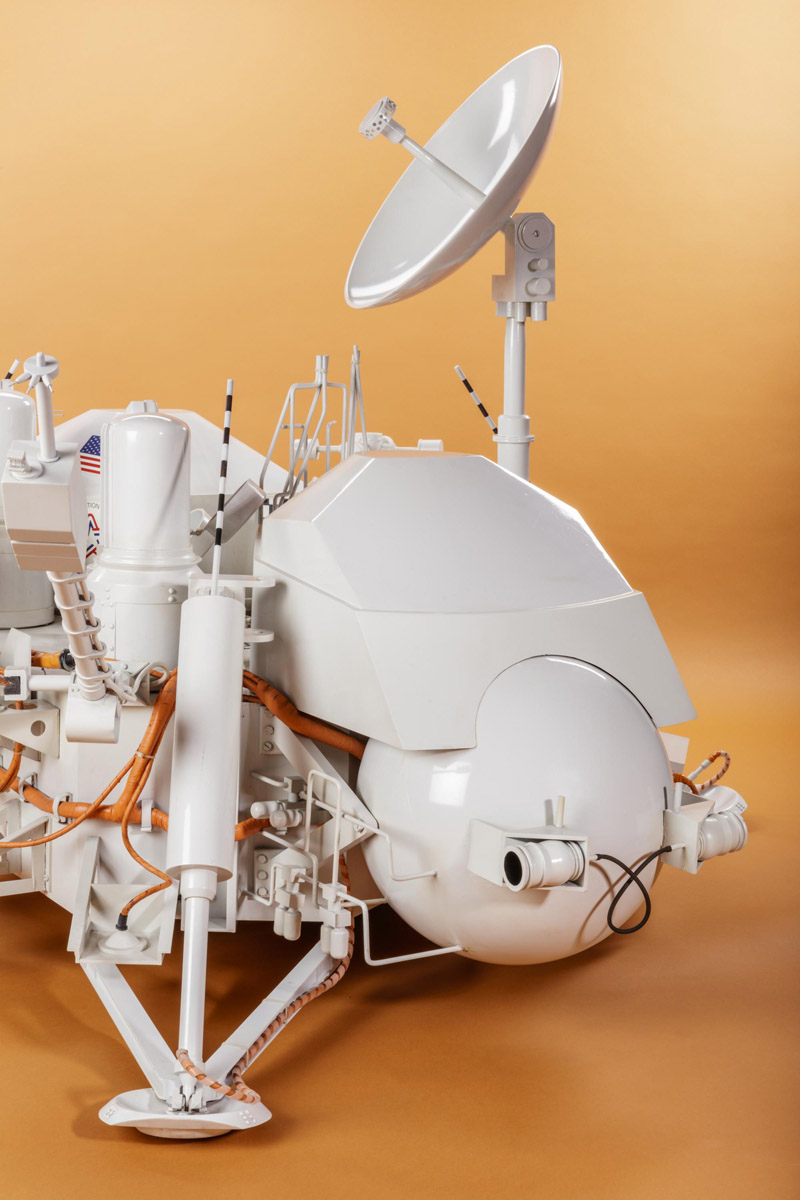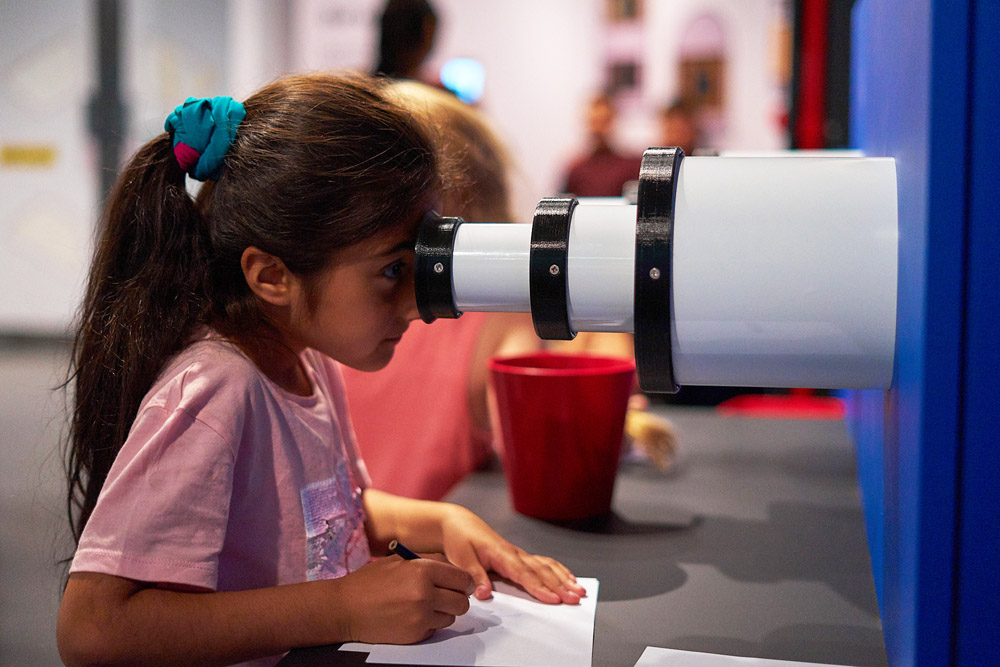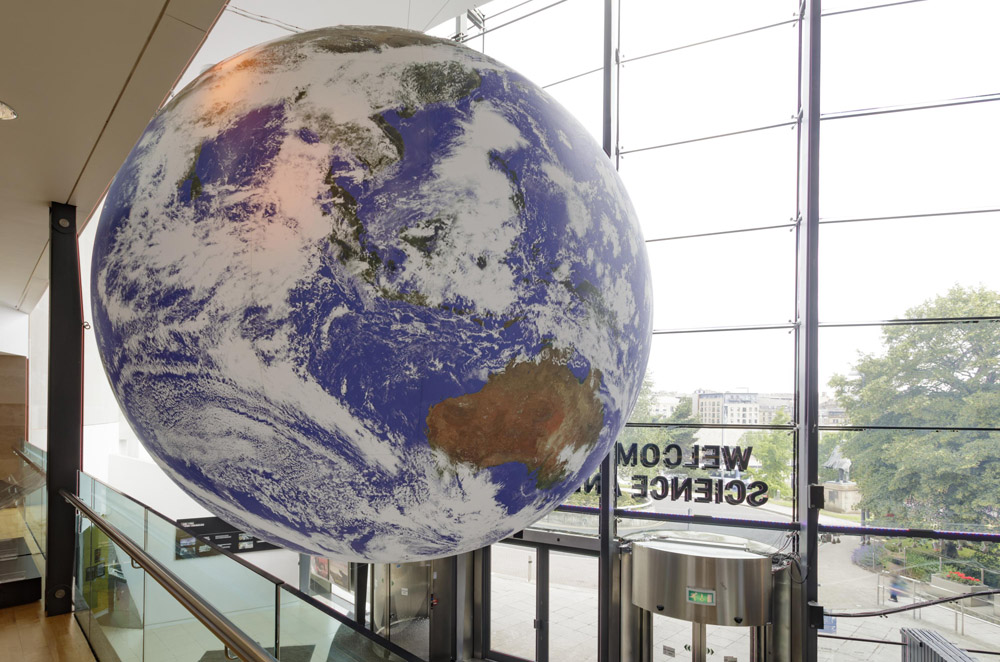Hello Universe is a brand new, exciting exhibition at the National Science and Media Museum. It’s packed full of interactive things to try, fun facts, and impressive objects such as a 1:2 scale model of the Viking lander used in expeditions to Mars.
Visiting the exhibition is a great way to learn more about our universe. Much more enjoyable than a textbook or lecture, it’s fun for all ages, with talks and shows as well as hands-on activities.

What is the universe?
The universe is a mystery above us. When you look up into the dark night sky, you may notice the hundreds of twinkling stars—sometimes you might even see a shooting star! This is all part of our universe, a mysterious place with thousands of galaxies full of undiscovered planets. What if there are other creatures living just like us thousands of miles away… you never know!
Most of our universe is made up of dark matter and dark energy—but what does that mean? Scientists don’t really know what dark matter is, but they have been able to show that it exists. It can’t be seen using any type of microscope or scientific instrument, but around 27% of the universe is made of it. Dark energy is something that scientists believe fills up all space: in fact, what we call ‘empty space’ is dark energy. This theory also helps scientists explain why our universe is expanding, and a whopping 68% of the universe is dark energy.

When we think of the universe, we might also think of the solar system—everything that orbits our Sun, including planets, asteroids, comets and meteoroids. Yet our solar system is just a small part of our galaxy, the Milky Way, and there are approximately over 100 billion galaxies in our universe!
Our solar system contains eight planets: Mercury, Venus, Earth, Mars, Jupiter, Saturn, Uranus and Neptune. You may not know that, apart from Earth, all the planets are named after gods from Roman and Greek mythology. There is also compelling evidence for a ninth planet. Most of the planets (except Neptune and Uranus) can be seen unaided, and all eight are visible with a small telescope or binoculars. You might want to try looking for them in the night sky yourself!
Alongside Hello Universe, the museum is currently displaying Luke Jerram’s sculpture Gaia, a detailed model of Earth measuring seven metres in diameter. It’s a great way to get a look at how you might see Earth if you were able to view it from space.

The Moon landing
In July 1969, the Apollo 11 mission put humans on the Moon for the first time ever. Mission commander Neil Armstrong was the first man to successfully land on the Moon in the Apollo Lunar Module Eagle. There would be six further crewed landings—the last in 1972—but Armstrong’s was the first.
The 1969 Moon landing was a worldwide phenomenon: 600 million people globally were glued to TV screens watching it happen live. Wherever they were, they stopped to watch this breathtaking event. Today, it is remembered as a groundbreaking moment in history.
To find out more, why not come along and visit Hello Universe? There’s a whole section dedicated to the Apollo 11 mission, full of fascinating facts and objects—even the original typed message that Neil Armstrong sent thousands of miles back to Earth from space!

Take a look at the Hello Universe page to see the full programme of free family events you can enjoy this summer. You can come along to a 15-minute Intergalactic Adventure Talk to get an introduction to some of the exhibition’s most amazing objects; if you prefer something more hands-on, join the LEGO Challenge and try your hand at building a rover, probe or satellite. Don’t forget to explore the rest of the museum too—head to Wonderlab for a close-up view of the Moon’s surface!
Hello Universe is open at the National Science and Media Museum until 22 January 2020.
A very informative and very well written piece. Well done to the author.
I will be paying a visit to the science and media museum will my children to see the exhibition.
What an interesting blog- so informative and so engaging- a trip to the museum is a ‘must’